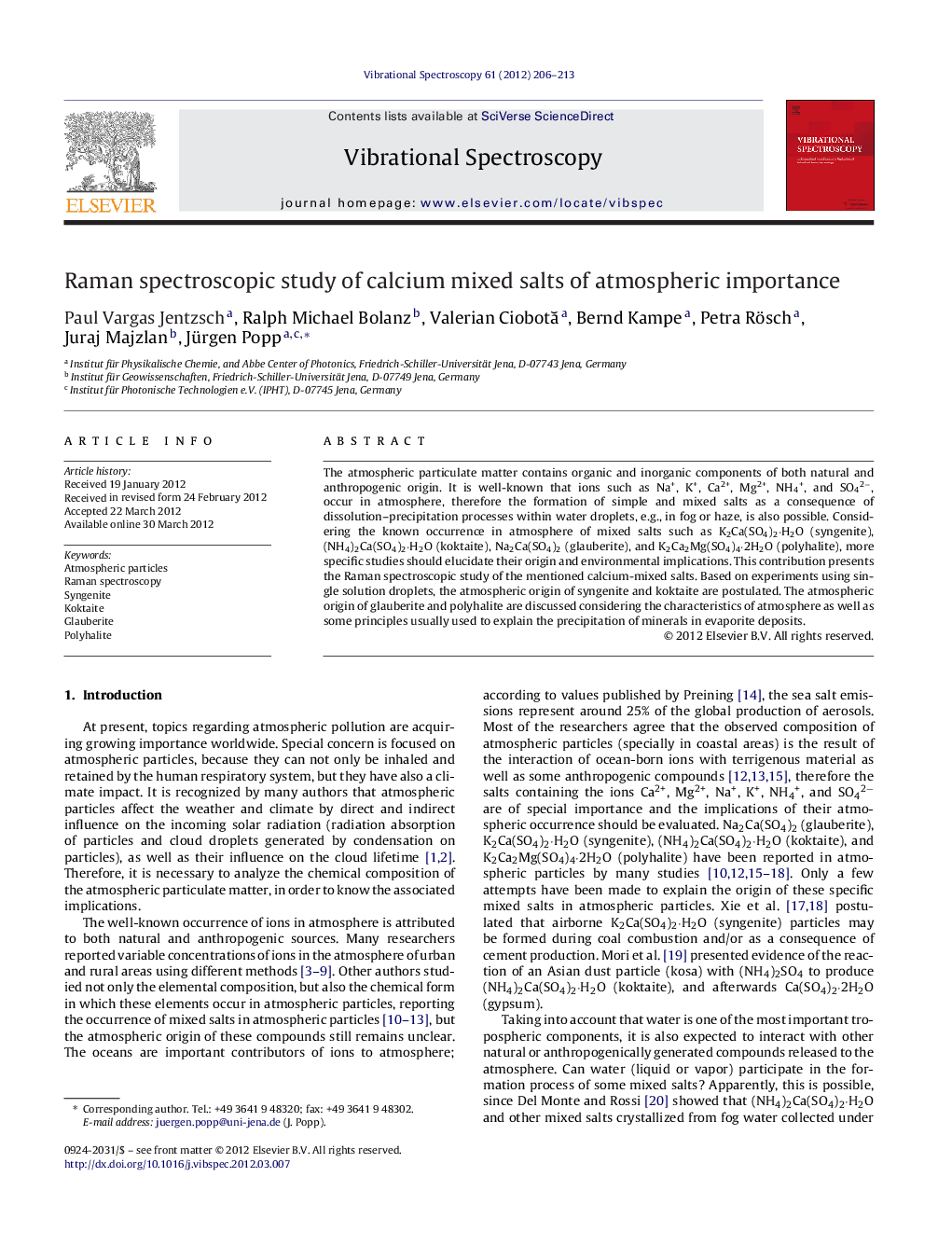| Article ID | Journal | Published Year | Pages | File Type |
|---|---|---|---|---|
| 1250530 | Vibrational Spectroscopy | 2012 | 8 Pages |
The atmospheric particulate matter contains organic and inorganic components of both natural and anthropogenic origin. It is well-known that ions such as Na+, K+, Ca2+, Mg2+, NH4+, and SO42−, occur in atmosphere, therefore the formation of simple and mixed salts as a consequence of dissolution–precipitation processes within water droplets, e.g., in fog or haze, is also possible. Considering the known occurrence in atmosphere of mixed salts such as K2Ca(SO4)2·H2O (syngenite), (NH4)2Ca(SO4)2·H2O (koktaite), Na2Ca(SO4)2 (glauberite), and K2Ca2Mg(SO4)4·2H2O (polyhalite), more specific studies should elucidate their origin and environmental implications. This contribution presents the Raman spectroscopic study of the mentioned calcium-mixed salts. Based on experiments using single solution droplets, the atmospheric origin of syngenite and koktaite are postulated. The atmospheric origin of glauberite and polyhalite are discussed considering the characteristics of atmosphere as well as some principles usually used to explain the precipitation of minerals in evaporite deposits.
